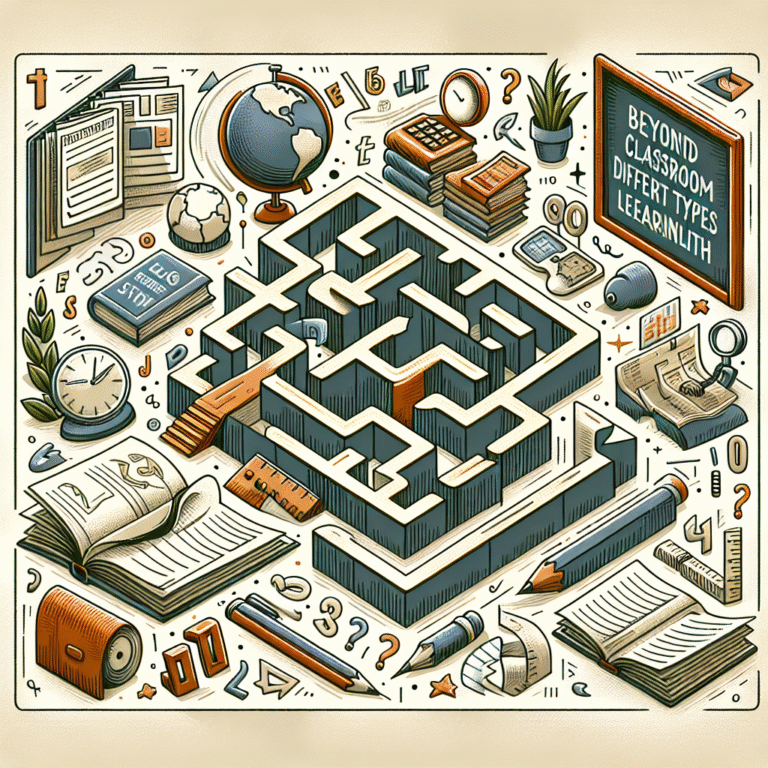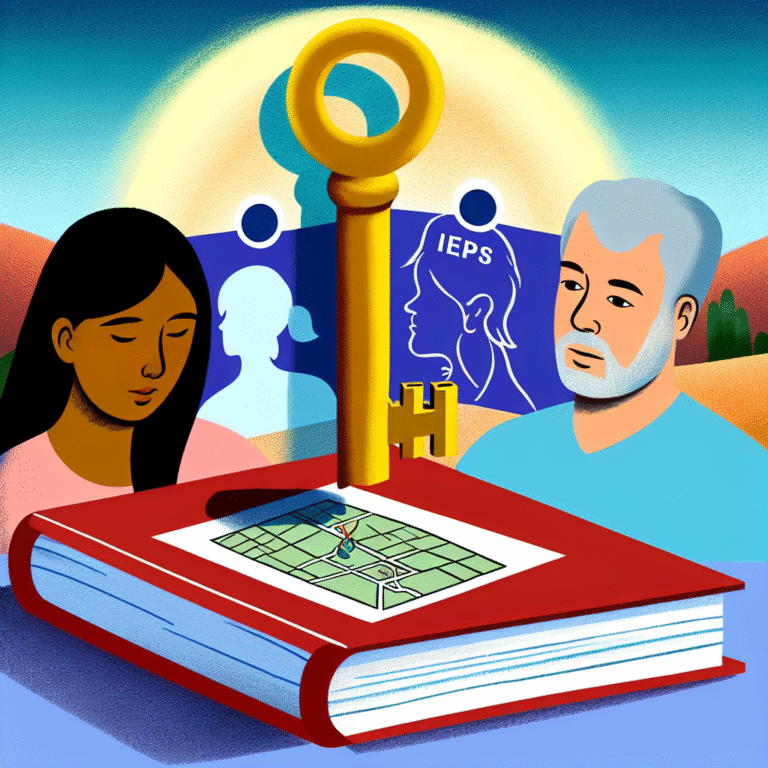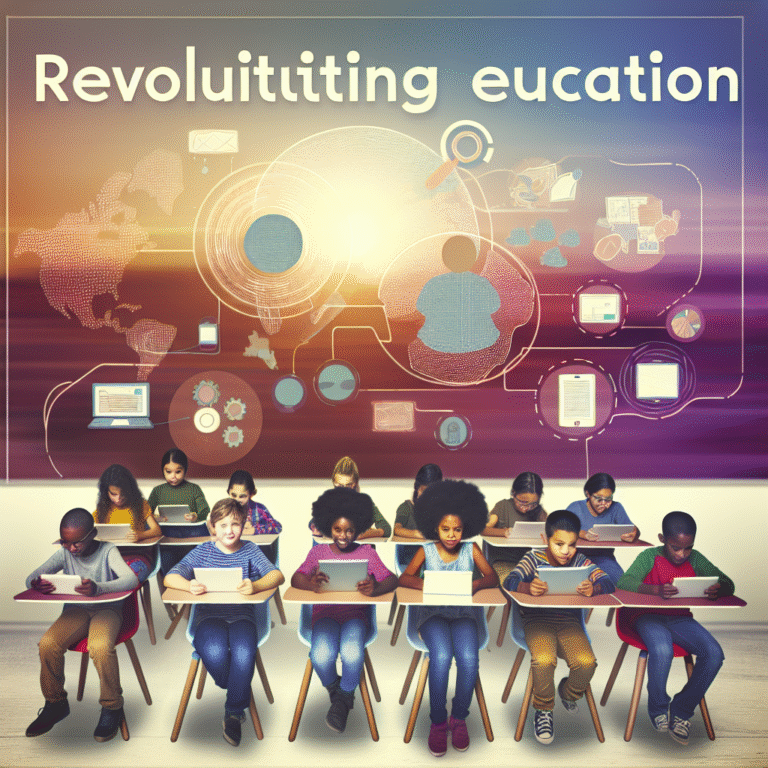
Breaking the Silence: An Essential Parent’s Guide to Discussing Learning Disabilities with Your Child
Introduction
Imagine a child, bright-eyed and full of potential, struggling quietly with tasks that come effortlessly to their peers. What if you could empower that child with the knowledge and understanding of their unique learning process? Breaking the Silence: A Parent’s Guide to Discussing Learning Disabilities with Your Child is designed to help you navigate these challenging yet crucial conversations. In a world where openness encourages growth, discussing learning disabilities can break barriers, diminish stigma, and cultivate resilience in your child. This guide equips parents with the tools to address learning disabilities thoughtfully, ensuring children feel understood and supported.
Understanding Learning Disabilities
Learning disabilities are neurological conditions that affect how individuals process, retain, and utilize information. From dyslexia to ADHD, these disabilities manifest in various ways, impacting a child’s academic performance and emotional well-being. Understanding these differences is the first step in Breaking the Silence: A Parent’s Guide to Discussing Learning Disabilities with Your Child.
Types of Learning Disabilities
- Dyslexia: Difficulty in reading, characterized by challenges with phonological processing.
- Dysgraphia: Challenges in handwriting and fine motor skills, affecting written expression.
- Dyscalculia: Difficulty understanding numbers and math concepts.
- ADHD (Attention-Deficit/Hyperactivity Disorder): Affects focus and self-control, impacting learning consistency.
Case Study: Emily’s Journey with Dyslexia
Emily, a seven-year-old, struggled with reading in her first grade. While her peers quickly learned to decode words, Emily often felt frustrated and isolated. After being diagnosed with dyslexia, her parents began to educate themselves about the condition. By implementing supportive measures, such as using audiobooks and color overlays, Emily’s reading confidence soared. Through this journey, her parents learned that open conversations about learning disabilities helped Emily feel less alone.
The Importance of Early Dialogue
Starting the conversation about learning disabilities as soon as difficulties arise is crucial to decreasing anxiety and fostering resilience. Addressing these challenges transparently allows children to understand their unique learning profiles, empowering them to advocate for themselves in educational settings.
How to Approach the Conversation
Prepare Your Thoughts
Before addressing the topic, gather information about your child’s specific learning disability. Understanding the condition will help you explain it more coherently, making your child feel secure.
Create a Comfortable Environment
Choose a quiet, relaxed setting for the discussion to minimize distractions. Ensure your child feels safe expressing their thoughts and concerns.
Phrasing Matters
Use positive, affirming language while avoiding jargon that might confuse your child. Rather than labeling their struggles as “failures,” frame them as unique learning styles that present opportunities for growth.
Example Dialogue
Parent: "I’ve noticed that reading might be a bit more challenging for you than it is for your classmates. That’s completely okay! Some people learn differently, and that’s perfectly normal."
Child: "But I feel so behind!"
Parent: "I understand. You know, learning in a different way can actually be a strength. We can find ways to make it easier and more enjoyable for you!"
Involving Educators
Partnering with teachers can bridge communication gaps. They can provide insights into your child’s behavior in the classroom and suggest effective strategies tailored to their needs.
Tools and Resources
Arming yourself and your child with the right tools is a significant part of Breaking the Silence: A Parent’s Guide to Discussing Learning Disabilities with Your Child. Here’s a look at what can help:
| Tool/Resource | Description |
|---|---|
| Books about Learning Disabilities | Age-appropriate books to explain learning differences positively. |
| Educational Apps | Interactive apps designed for children with different learning styles. |
| Support Groups | Online and offline resources for parents and children to share experiences. |
Case Study: Jack and Educational Apps
When Jack’s family introduced educational apps tailored for kids with dyscalculia, they noticed a significant improvement in his math skills. The interactive features kept him engaged and motivated, leading to a more positive attitude about mathematics. This experience showcased how technology can enhance traditional learning and bring joy to otherwise challenging subjects.
Monitoring Progress and Adjusting the Approach
Keep the Dialogue Open
Ongoing conversations about learning disabilities should not be a one-time affair. Developing a habit of regular check-ins can help.
- Ask Questions: How do you feel about school this week? Are there any subjects you find more challenging?
- Celebrate Small Wins: Acknowledge milestones and improvements, no matter how minor they may seem.
Adjusting Strategies as Needed
Children’s needs may evolve as they grow. Be prepared to adapt learning strategies to fit their developing self-concept and skills.
Case Study: Mia’s Evolving Strategies
Mia, diagnosed with ADHD, thrived using structured routines in her early school years. As a teenager, her parents switched to more flexible strategies that encouraged decision-making in her tasks. This adaptability not only helped her learn better but also instilled a sense of independence.
Building Self-Advocacy Skills
Empowering Your Child
Teaching your child how to advocate for themselves in educational environments will prepare them for future challenges. Communicate the importance of:
- Recognizing their strengths and areas needing support
- Clearly articulating their needs to teachers and peers
- Seeking help when needed without feeling ashamed
Practical Role-Playing
Conduct role-playing exercises where your child can practice speaking up, whether it’s asking a teacher for assistance or explaining their learning disability to a friend.
Transitioning to Different Learning Environments
As children advance through school, they may enter new environments with different expectations. Preparing them for these transitions is critical.
Anticipate Changes
Changes such as moving to middle school or high school present significant adjustments. Arrange visits to new schools, meet teachers beforehand, and discuss potential challenges they might face.
Case Study: Liam’s Transition to High School
When Liam transitioned to high school, he encountered more complex social dynamics and academic pressures. By discussing these potential stresses with him beforehand, his parents provided him with coping strategies and a plan for seeking help when needed. This foresight laid the groundwork for a more seamless transition.
Conclusion
Breaking the Silence: A Parent’s Guide to Discussing Learning Disabilities with Your Child is more than just a guide; it’s an empowering journey towards understanding, acceptance, and growth. By fostering open communication, celebrating uniqueness, and equipping your child with advocacy skills, you lay the foundation for a future filled with potential. Remember, every learning difference can be a path to incredible strength—both for your child and your family.
FAQs
1. How do I know if my child has a learning disability?
Signs may include difficulties in reading, writing, math, or sustaining attention. Consult with educators and consider seeking a professional evaluation if concerns persist.
2. What age should I start discussing learning disabilities with my child?
It’s best to address any concerns as soon as they arise, typically around elementary school age. Early dialogue promotes understanding and acceptance.
3. How can I help my child feel more confident about their learning disability?
Focus on their strengths and achievements, engage in supportive activities, and maintain an open dialogue to provide encouragement.
4. Should I tell my child about their learning disability?
Yes, informing them helps demystify the challenges they face. Use age-appropriate language and encourage questions.
5. What resources are available for families of children with learning disabilities?
Seek local and online support groups, educational materials tailored for children, as well as advocacy organizations dedicated to learning differences.
By adopting an empowered mindset and utilizing the insights provided in this guide, you will not only help your child navigate their learning differences but also instill in them a lifelong love for learning and self-discovery.






